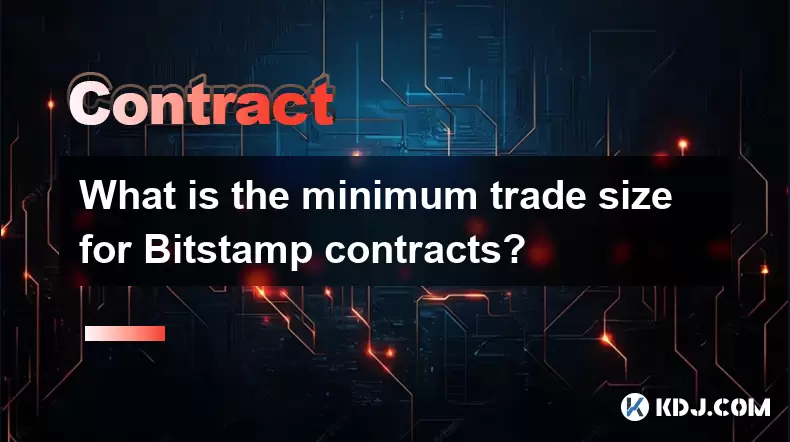-
 Bitcoin
Bitcoin $117900
-1.36% -
 Ethereum
Ethereum $3579
-3.25% -
 XRP
XRP $3.123
-11.35% -
 Tether USDt
Tether USDt $1.000
-0.01% -
 BNB
BNB $765.4
-1.41% -
 Solana
Solana $187.0
-6.55% -
 USDC
USDC $0.9999
0.00% -
 Dogecoin
Dogecoin $0.2376
-9.95% -
 TRON
TRON $0.3064
-2.32% -
 Cardano
Cardano $0.8027
-9.57% -
 Hyperliquid
Hyperliquid $43.20
-3.41% -
 Stellar
Stellar $0.4190
-10.58% -
 Sui
Sui $3.657
-7.55% -
 Chainlink
Chainlink $17.91
-7.84% -
 Hedera
Hedera $0.2438
-9.88% -
 Bitcoin Cash
Bitcoin Cash $505.9
-2.55% -
 Avalanche
Avalanche $23.63
-6.53% -
 Litecoin
Litecoin $110.9
-5.61% -
 UNUS SED LEO
UNUS SED LEO $8.969
-0.03% -
 Shiba Inu
Shiba Inu $0.00001368
-10.13% -
 Toncoin
Toncoin $3.155
-5.74% -
 Ethena USDe
Ethena USDe $1.001
-0.01% -
 Polkadot
Polkadot $4.082
-8.38% -
 Uniswap
Uniswap $9.951
-6.29% -
 Monero
Monero $309.9
-2.47% -
 Bitget Token
Bitget Token $4.656
-3.04% -
 Dai
Dai $0.0000
0.01% -
 Pepe
Pepe $0.00001253
-9.22% -
 Aave
Aave $287.4
-5.98% -
 Bittensor
Bittensor $419.3
-5.34%
How to calculate the profit and loss of HTX contracts? Is the rate of return displayed in real time?
HTX, formerly Huobi, offers futures and perpetual contracts; calculating P&L involves entry price, market price, position size, and leverage, with real-time rate of return displayed.
May 17, 2025 at 11:15 pm

Understanding HTX Contracts
HTX, formerly known as Huobi, is a leading cryptocurrency exchange that offers various trading products, including futures and perpetual contracts. Calculating the profit and loss (P&L) of HTX contracts is crucial for traders to manage their investments effectively. In this article, we will delve into the detailed process of calculating the P&L of HTX contracts and discuss whether the rate of return is displayed in real time.
Basics of HTX Contracts
Before we dive into the calculations, it's important to understand the basic structure of HTX contracts. HTX offers both futures and perpetual contracts. Futures contracts have a set expiration date, while perpetual contracts do not expire and are designed to mimic the price movements of the underlying asset more closely.
Calculating Profit and Loss on HTX Contracts
To calculate the profit and loss of HTX contracts, traders need to consider several key factors, including the entry price, the current market price, the position size, and the leverage used. Let's break down the process step-by-step.
Determine the Entry Price: This is the price at which you entered the contract. For example, if you bought a Bitcoin perpetual contract at $30,000, this is your entry price.
Track the Current Market Price: The current market price is the price at which the contract is currently trading. If Bitcoin is now trading at $32,000, this is your current market price.
Calculate the Price Difference: Subtract the entry price from the current market price to find the price difference. In this case, $32,000 - $30,000 = $2,000.
Determine the Position Size: This is the number of contracts you are holding. If you are holding 10 contracts, your position size is 10.
Consider the Contract Size: Each contract on HTX has a specific size. For example, if one Bitcoin contract represents 0.001 BTC, then 10 contracts represent 0.01 BTC.
Calculate the Profit or Loss in BTC: Multiply the price difference by the contract size and the position size. In this case, $2,000 0.01 BTC = 0.02 BTC.
Convert to USD: If you want to see your profit or loss in USD, multiply the result by the current market price of Bitcoin. 0.02 BTC $32,000 = $640.
Account for Leverage: If you are using leverage, you need to multiply the profit or loss by the leverage factor. For example, if you are using 10x leverage, your profit or loss is multiplied by 10. So, $640 * 10 = $6,400.
Example Calculation
Let's go through an example to solidify the concept. Suppose you bought 5 Bitcoin perpetual contracts at an entry price of $25,000. The current market price is $27,000, and each contract represents 0.001 BTC. You are using 20x leverage.
- Price Difference: $27,000 - $25,000 = $2,000
- Position Size: 5 contracts
- Contract Size: 0.001 BTC per contract
- Profit in BTC: $2,000 0.001 BTC 5 = 0.01 BTC
- Profit in USD: 0.01 BTC * $27,000 = $270
- Profit with Leverage: $270 * 20 = $5,400
In this example, your profit would be $5,400.
Real-Time Rate of Return on HTX
HTX provides traders with real-time data, including the rate of return on contracts. The rate of return is displayed in real time on the HTX trading platform, allowing traders to monitor their investments closely. This real-time data is crucial for making informed trading decisions.
Accessing Real-Time Data: To view the real-time rate of return, log into your HTX account and navigate to the futures or perpetual contracts section. Here, you will see a dashboard displaying the current market price, your open positions, and the real-time rate of return.
Understanding the Display: The rate of return is typically shown as a percentage, indicating the profit or loss relative to the initial investment. This percentage updates in real time as the market price changes.
Using Real-Time Data: Traders can use this real-time information to decide whether to hold, close, or adjust their positions. For example, if the rate of return is positive and increasing, you might decide to hold your position. If it's negative and decreasing, you might choose to cut your losses.
Factors Affecting Profit and Loss
Several factors can affect the profit and loss of HTX contracts, and understanding these can help you manage your trades more effectively.
Market Volatility: Cryptocurrency markets are known for their volatility, which can lead to significant price swings. High volatility can result in larger profits or losses.
Leverage: Using leverage can amplify both gains and losses. While it can increase potential profits, it also increases the risk of significant losses.
Funding Rates: For perpetual contracts, funding rates can affect your P&L. Positive funding rates mean you pay to hold a long position, while negative funding rates mean you receive payments for holding a short position.
Liquidation Price: If the market moves against your position and reaches your liquidation price, your position will be automatically closed, resulting in a loss. It's important to monitor your liquidation price and adjust your position size and leverage accordingly.
Practical Tips for Managing P&L on HTX Contracts
Managing your profit and loss effectively requires a strategic approach. Here are some practical tips to help you navigate HTX contracts:
Set Stop-Loss Orders: A stop-loss order can help you limit potential losses by automatically closing your position if the market moves against you.
Use Take-Profit Orders: Similarly, a take-profit order can help you lock in profits by closing your position when it reaches a certain level of profit.
Monitor Market Trends: Stay informed about market trends and news that could affect the price of the underlying asset. This can help you make more informed trading decisions.
Adjust Leverage Wisely: Be cautious with leverage. While it can increase potential profits, it can also lead to significant losses. Adjust your leverage based on your risk tolerance and market conditions.
Diversify Your Portfolio: Don't put all your eggs in one basket. Diversifying your investments can help mitigate risk and improve your overall P&L.
Frequently Asked Questions
Q: Can I calculate the profit and loss of HTX contracts manually, or do I need to use the platform's tools?
A: While HTX provides tools to calculate profit and loss automatically, you can also calculate it manually using the steps outlined in this article. Manual calculation can help you better understand the factors affecting your P&L.
Q: What happens if my position gets liquidated on HTX?
A: If your position reaches the liquidation price, HTX will automatically close your position to prevent further losses. The remaining funds in your account will be used to cover the loss, and any remaining balance will be returned to your account.
Q: How often do funding rates get updated on HTX perpetual contracts?
A: Funding rates on HTX perpetual contracts are typically updated every 8 hours. These rates can be positive or negative and are designed to keep the contract price aligned with the spot price of the underlying asset.
Q: Is there a way to reduce the risk of significant losses on HTX contracts?
A: Yes, you can reduce the risk of significant losses by using stop-loss orders, adjusting your leverage wisely, diversifying your portfolio, and staying informed about market trends and news.
Disclaimer:info@kdj.com
The information provided is not trading advice. kdj.com does not assume any responsibility for any investments made based on the information provided in this article. Cryptocurrencies are highly volatile and it is highly recommended that you invest with caution after thorough research!
If you believe that the content used on this website infringes your copyright, please contact us immediately (info@kdj.com) and we will delete it promptly.
- Dogecoin's Resistance Retest: Parabolic Move on the Horizon?
- 2025-07-24 04:50:13
- WLFI, Vaulta Token, and Holdings: Navigating the Web3 Revolution
- 2025-07-24 05:30:13
- BlockDAG, Dogecoin, and the $350M Presale Frenzy: What's Hot Now?
- 2025-07-24 04:50:13
- Ethereum, Meme Coins, and Presale Funding: What's the Hype?
- 2025-07-24 05:30:13
- Ethereum Meme Coin Presales: Hype or the Future?
- 2025-07-24 05:35:13
- ADA's Rocky Ride: Support Levels and Open Interest Under Scrutiny
- 2025-07-24 05:35:13
Related knowledge

Why is my Bitstamp futures position being liquidated?
Jul 23,2025 at 11:08am
Understanding Futures Liquidation on BitstampFutures trading on Bitstamp involves borrowing funds to open leveraged positions, which amplifies both po...

Does Bitstamp offer inverse contracts?
Jul 23,2025 at 01:28pm
Understanding Inverse Contracts in Cryptocurrency TradingIn the realm of cryptocurrency derivatives, inverse contracts are a specific type of futures ...

How to find your Bitstamp futures trade history?
Jul 23,2025 at 08:07am
Understanding Bitstamp and Futures Trading AvailabilityAs of the current state of Bitstamp’s service offerings, it is critical to clarify that Bitstam...

Can I use a trailing stop on Bitstamp futures?
Jul 23,2025 at 01:42pm
Understanding Trailing Stops in Cryptocurrency TradingA trailing stop is a dynamic type of stop-loss order that adjusts automatically as the price of ...

What is the minimum trade size for Bitstamp contracts?
Jul 23,2025 at 07:14pm
Understanding Bitstamp and Its Contract OfferingsBitstamp is one of the longest-standing cryptocurrency exchanges, established in 2011, and known for ...

How to trade ETH perpetuals on Bitstamp?
Jul 23,2025 at 03:28am
Understanding ETH Perpetual ContractsETH perpetual contracts are derivative products that allow traders to speculate on the price of Ethereum without ...

Why is my Bitstamp futures position being liquidated?
Jul 23,2025 at 11:08am
Understanding Futures Liquidation on BitstampFutures trading on Bitstamp involves borrowing funds to open leveraged positions, which amplifies both po...

Does Bitstamp offer inverse contracts?
Jul 23,2025 at 01:28pm
Understanding Inverse Contracts in Cryptocurrency TradingIn the realm of cryptocurrency derivatives, inverse contracts are a specific type of futures ...

How to find your Bitstamp futures trade history?
Jul 23,2025 at 08:07am
Understanding Bitstamp and Futures Trading AvailabilityAs of the current state of Bitstamp’s service offerings, it is critical to clarify that Bitstam...

Can I use a trailing stop on Bitstamp futures?
Jul 23,2025 at 01:42pm
Understanding Trailing Stops in Cryptocurrency TradingA trailing stop is a dynamic type of stop-loss order that adjusts automatically as the price of ...

What is the minimum trade size for Bitstamp contracts?
Jul 23,2025 at 07:14pm
Understanding Bitstamp and Its Contract OfferingsBitstamp is one of the longest-standing cryptocurrency exchanges, established in 2011, and known for ...

How to trade ETH perpetuals on Bitstamp?
Jul 23,2025 at 03:28am
Understanding ETH Perpetual ContractsETH perpetual contracts are derivative products that allow traders to speculate on the price of Ethereum without ...
See all articles

























































































